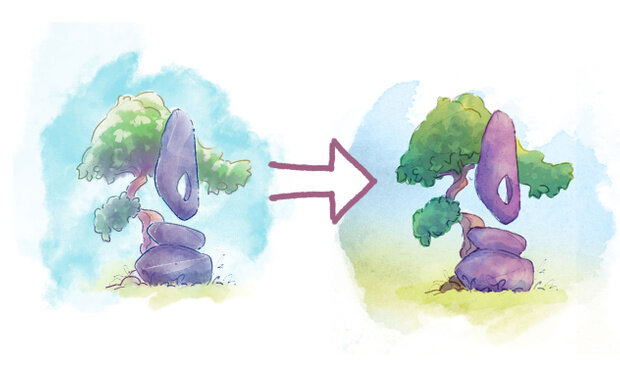Determining Book Production Methods
This is a repost of an archived article originally published on my Patreon a few years ago. Enjoy!
This may seem like an odd title but this past week I've been working on an interesting conundrum:
How do you effectively produce 104 images that remain consistent throughout in color, value and style and produce them quickly yet at a high quality?
Here's how I answered that question:
I've played around with trying my hand at a digital version of how I paint for quite some time now but I've never really settled on one thing. Either I wanted an original to sell or, most often, the finished results were never up to par with what I wanted. (I'm a perfectionist so this makes things extra hard.)
With my book project at the very top of my list and this month getting organized to produce 104 images I decided to revisit my methods of working once more.
If you hang around on the internet long enough you're bound to come across the naysayers that dislike digital painting for various reasons. I'm not one of those people. I love it! It was my first medium not so very long ago. It's a wonderful tool that allows me to make the watercolor art that you see today. Without it I wouldn't be growing as an artist, able to confidently execute new ideas without my weird hangup with characters and faces.
50%
When I began to tackle this problem I would say that I started at about 50% there already, having already done the line work ahead of time.
60%
So I'm back at the medium once more but this time with a very different take. I opened up Ktyle T Webster's Watercolor brush set and went to town coloring a little bit of line work. The results were interesting and exciting all at the same time but it didn't really hit home like I wanted it to.
Something felt off but I didn't know what.
70%
As you know, for the past 6 months I've been producing line work digitally and printing it archivally to watercolor. This is where I headed next with a test illustration printed out on watercolor paper. I also printed out portions of my digital attempt as well and played with painting over top. An interesting effect but not something I was very happy with.
But then I had a breakthrough!
80%
Painting with watercolor over my digital image I realized that the brushes I had been using digitally >looked< digital because I was treating it like it was digital painting, not watercolor. Why not mimic my familiar techniques in watercolor in the computer instead?
I'd seen updates that Kyle Webster had put out new watercolor brushes and quickly downloaded those. They were such an improvement over the ones I was previously using!
Remembering my breakthrough, and using my handy samples as a guide, I began on the third iteration of my little test piece using the new brushes and scanned in texture washes of my own.
So close!
I showed this sketch to a friend who also works in both mediums and together we were able to pinpoint the differences and things I still needed to change. Things like edges were a big difference with my own work and the piece. I noticed when they are too clean is a big giveaway that they don't feel like my hand is in them.
90%
And here is the resulting image!
Why stop at 90%? Because I'm currently repeating this process on several other sketches to be sure it's repeatable before I bring it into my production pipeline as "the way of doing things" and say I'm 100% there.
I also have a long list of textures I need to paint and scan. But all in all I'm thrilled to have a finished sketch that I'm proud and excited to show of as something that I've made, and most importantly, was quick to create and (hopefully) repeatable!







